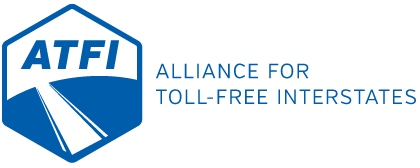Transportation infrastructure funding is a concern for all levels of government. Where transportation dollars come from and how they are spent are issues public officials face on a near daily basis. With the declining purchasing power of the gas tax and the increase in construction costs, the pool of dollars dedicated to roads is dwindling.
In the absence of increased funding from traditional sources, federal, state and local governments are searching for additional ways to generate revenue dedicated to transportation infrastructure. One mechanism that has been utilized by some states and localities to finance new construction is tolls. Whether it’s placing tolls on bridges and tunnels or building new toll roads, certain public officials have used tolls to finance high capital projects.
To be sure, there are transportation infrastructure projects that benefit from the use of tolls. These specific projects can be beneficial to localities and the people living in the areas in which they are located.
Nevertheless, tolling is not a panacea for all transportation funding challenges and it is critical that all levels of government understand the limitations and challenges associated with tolling as a revenue source. This is especially true as it pertains to placing tolls on existing federal interstate capacity.
Currently, there exists a federal ban on placing tolls on existing federal interstate lanes. This prohibition has been in place since the inception of the Federal Interstate Highway System in 1956. However, through a pilot program, Congress does allow up to three states to place tolls on an existing interstate as a means of financing maintenance and reconstruction of that particular interstate.
The goal of the pilot program was to generate case studies to assess whether or not the decades-old federal ban should be lifted. In the fifteen-year history of the program, no state has successfully placed tolls on existing interstate lanes. A number of states considered applying for the program and chose not to while others submitted applications and were approved to move forward. These states expended significant money and resources to study the issue and apply for the program, but none implemented their plans.
From the perspective of the states that applied, the concept of using tolls to finance reconstruction and maintenance of existing interstate capacity was enticing. But as details of the proposals emerged in those states, the inefficiencies of tolls and the impacts on communities and local economies around the toll facilities became clear.
In 2011, Virginia was given conditional approval to place tolls on Interstate 95 (I-95) in the southern portion of the state. An economic study was funded by the state and numerous public hearings were held to discuss the results. During this process it became clear to the localities located along the I-95 corridor that the costs of the tolls to their communities far outweighed the perceived benefits to the state.
23 Virginia Counties and Cities along the I-95 corridor formally passed resolutions opposing the tolls, while six economic development and regional planning organizations publicly expressed opposition as well.
Concerns cited included:
Inefficiency of toll collection: 38 percent of the revenue collected in the first six years would go toward construction, operation, and maintenance of the toll facility, and 16 percent of the revenue would go to the same purpose over 25 years. The tolls would also have increased enforcement costs for state and local judicial systems.
Traffic diversion: Interstate volume traffic would have diverted onto local and secondary roads, making them less safe due to increased congestion, extending first responder emergency response time, and hastening deterioration of the roads that the new tolls would not maintain.
Economic impacts: Businesses in some of these rural communities rely on unrestricted travel on the Interstate for their customer base. Forcing interstate traffic to alternative routes would have starved these businesses of vital consumers, including truckers and destination travelers.
North Carolina also considered tolling the entire portion of I-95 within their borders. A 2013 Economic Assessment of I-95 in North Carolina estimated that between 2014 and 2050 diversion from tolls on I-95 would cost approximately $1.1 billion dollars in revenue to businesses within a mile of the I-95 corridor in the state.
A “one-size-fits-all” approach rarely provides an adequate solution to a problem, especially across multiple levels of government. Tolls on roads to produce additional revenue may be appropriate in certain, narrowly tailored situations. However, placing tolls on existing interstate capacity is simply not a reasonable and responsible mechanism for generating revenue for maintenance and reconstruction. There are more creative and equitable means of increasing revenue dedicated to existing federal transportation infrastructure that do not shift burdens on and create additional problems for local governments.
Governments, from federal to local, must focus on finding real solutions to ensure the long-term sustainability of the nation’s existing federal interstate system.
Hayes Framme is the spokesman for the Alliance for Toll-Free Interstates, a coalition of businesses, organizations and individuals united in the belief that a viable, sustainable solution to America’s transportation funding needs must not include putting new tolls on existing interstates.
This article was sent as a response to American City & County's recent story, For whom the highways toll.

